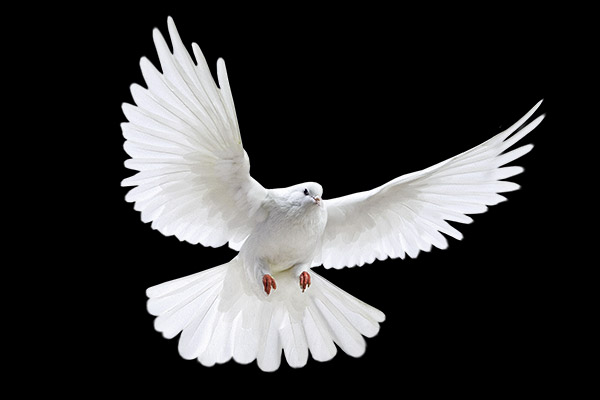What can you expect to hear in this anti-war piece?
It might be called The Armed Man but the piece by Welsh composer Sir Karl Jenkins that Avondale Conservatorium presents tomorrow evening (Saturday, June 2) is actually anti-war.
Commissioned by the Royal Armouries Museum for the Millennium celebrations, to mark the museum’s move from London to Leeds, it is dedicated to victims of the war in Kosovo. Jenkins combines with other sources, principally the 15th-century folk song “L’homme Armé” in the first and last movements.
In addition to extracts from the Ordinary of the Mass, the texts for the piece come from other religious and historical sources, including the Islamic call to prayer, the Bible and the Mahabharata. Writers whose words appear in the work include Rudyard Kipling, Alfred Lord Tennyson and Sankichi Toge, who survived the Hiroshima bombing but died later of leukaemia.
Since its premiere performance in London’s Royal Albert Hall on April 25, 2000, this portrayal of peace and hope amidst the horror of war continues to enchant performers and their audiences. And it is a timely commemoration for 2018, the 100th anniversary of the end of World War I.
Do we join with Tennyson when he tells us to “Ring out the thousand wars of old. . . . Ring in the thousand years of peace”? It may seem an impossible dream . . . but The Armed Man ends with the affirmation from Revelation that change is possible, that sorrow, pain and death can be overcome.Guy Wilson, former Head, Royal Armouries Museum, United KingdomThe Armed Man begins with a marching army and the beat of military drums, the orchestra gradually building to the choir’s entrance, singing the 15th-century French folk song—“L’Homme Armé” (The Armed Man). After the scene is set, the style and pace changes and we are prepared for reflection by first the Islamic call to worship (adhan) and then the Kyrie, which pays homage to the past by quoting (in the Christe eleison) from Italian composer Giovanni Pierluigi da Palestrina’s setting of L’Homme Armé.
Next, to a plainsong setting, we hear words from the Psalms asking for God’s help against our enemies. The Sanctus that follows is full of menace and has a primeval, tribal character that adds to its power. The menace grows in the next movement as Kipling’s Hymn Before Action builds to its final devastating line: “Lord grant us strength to die.”
War is now inevitable. The sixth movement, Charge!, opens with a seductive paean to martial glory, which is followed by the inevitable consequence—war in all its uncontrolled cacophony of destruction, then the eerie silence of the battlefield after the battle and, finally, the burial of the dead. Surely nothing can be worse than this? But think again. At the centre of the piece is the seventh movement, Angry Flames, an excerpt from Toge’s poem about the horrors of Hiroshima. If we think the obscenity of this mass destruction is new to our consciousness, we must reconsider as we listen to the eerily similar passage from the ancient Indian epic, Mahabharata.
From the horror of mass destruction the piece turns to remember that one death is one too many, that each human life is sacred and unique. First the Agnus Dei movement, with its lyrical chorale theme, reminds us of Christ’s ultimate sacrifice and this is followed by an elegiac setting of some lines I wrote (to accompany one of the dramatic interpretations we use in the museum) about the feelings of loss and guilt that so many of the survivors of World War I felt when they came home but their friends did not.
Even the survivors can be hurt to destruction by war. The Benedictus heals those wounds in its slow and stately affirmation of faith and leads us to the final, positive, climax of the piece. This begins back where we started in the 15th century with Thomas Malory’s King Arthur characters Lancelot and Guinevere’s declaration, born of bitter experience, that peace is better than war. The menace of “L’Homme Armé” returns and vies for a time with Malory’s desire for peace. But time moves on and we come to our moment of commitment. Do we want the new millennium to be like the last? Or do we join with Tennyson when he tells us to “Ring out the thousand wars of old. . . . Ring in the thousand years of peace”? It may seem an impossible dream, we may not have begun too well, but The Armed Man ends with the affirmation from Revelation that change is possible, that sorrow, pain and death can be overcome.
Concert: War and Peace
Experience the spectacular musical sensation that is Sir Karl Jenkins’ The Armed Man: A Mass for Peace in a collaboration between Newcastle Wind Orchestra, Avondale Singers and Port Harmony featuring Kathryn Dries as mezzo soprano soloist with conductors Dr Ian Cook and Aleta King. This multimedia performance will also feature creative dance movement and Associate Professor Daniel Reynaud’s moving narration of excerpts from his new book. Presented by the Conservatorium of Music at Avondale College of Higher Education. Avondale College Seventh-day Adventist Church, Saturday, June 2, 7 pm.
LEARN MOREShare

